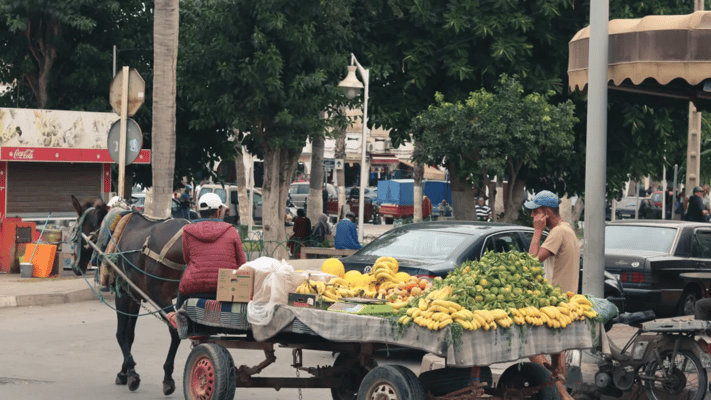Missing Pieces: The Motivations Behind Indian Migration

The third installment of a four-part series on Indian migration to New Zealand
It's easier to point to the source of a large number of immigrants from South Asia around a century ago than it is to identify the reasons for their relocation. But the west Indian state of Gujarat was a hot spot for emigration back then due to its proximity to the coast, with migrants holding experience in rural agriculture and business that gave them a solid foundation upon arriving on these shores.
The history of Indians in New Zealand is peppered with tales of resourceful vendors hawking fruit and vegetables to survive.
However, less is known about their motivations for migrating to the isolated South Pacific nation in the first place.
The first wave of mass migration from India began more than a century ago, with many arriving from the South Gujarat region of Navsari.
According to local historians, these pioneers brought with them a knowledge of rural agriculture and business that allowed them to survive and thrive in previously unchartered territory.
"South Gujarat has always been a prosperous region with fertile soil, so it makes sense the people of Navsari leaned into that and got into fruit and vegetable trade," says Dhara Bhatt, a media professor at Surat's Auro University.
"From Narmada belt to Tapi, there's a very good amount of fruit farming, specifically for bananas, sugarcane and papitas, which are very good cash crops. You don't have to look after them very carefully, but they'll give you a good amount of money."
Bhatt says the people of South Gujarat are known to have a knack for business that persists throughout the diaspora.
"The first question Gujaratis ask is 'Dhandho kevi rite chalu kariye?' That is, how can we make some kind of money here?" she says.
"They're business-minded people. If they have 10 rupees, they'll think, why not invest five in something that will pay dividends.
"And their risk-taking capacity is also very high. They might even invest the full 10 rupees if they feel the business could be lucrative."

Dhara Bhatt is a media professor at Surat's Auro University. Photo: RNZ / Jogai Bhatt
Indian-owned fruit businesses began cropping up around New Zealand during the 1920s. They began on streetside corners, where hawkers would wheel around fruit and vegetables before earning enough money to hawk in small trucks.
The 1921-22 Shop and Office Act meant the hawkers could eventually open shops and businesses of their own.
Bhatt says fresh produce isn't just a convenience, it's a necessity.
As such, getting into the food business was an extension of Gujarati business acumen.
"During Covid, fruit and vegetables came into basic supplies, so [our farmers] were never out of work," Bhatt says.
"Gujaratis just have this knack for understanding business, they know no human being can live without food, even in the most crisis situation. It's the first thing people think about."

Fruit produce isn't just a convenience, it's a necessity, media professor Dhara Bhatt says.
Mukesh Patel, a historian and college principal in Surat, says Navsari has a deep trading history that can be traced back centuries thanks to its proximity to Surat -one of India's most bustling seaports.
"Navsari had a small port, but there wasn't much activity happening there," Patel says. "For the village traders to really be successful, they would have to go to Surat, which had been a hub of international trade from as early as the 15th century."
Patel says Surat had a glowing reputation for trade in virtually every industry, from textiles and gems to nuts and spices.
He says Navsari was able to contribute more to this trade in the form of local produce.
"Vegetables, grains, mangoes, chikoo, sweet potato, papdi, wheat, pearl millet … these were all very desired in India and, slowly, as the world got a taste, the demand began to grow," he says.
"There were many international connections to be made in Surat, so it was beneficial for Navsari traders to be making the journey.

Mukesh Patel is a historian and principal of MTB Arts College in Surat. Photo: RNZ / Jogai Bhatt
Surat's port is known today as Choryasi, which means "84" in Gujarati and is named after the 84 ports the city traded with during the 15th and 16th centuries.
Bhatt says British presence in Surat during this time was strong, particularly with the establishment of the first English trading factory in 1612.
She imagines Navsari residents may have encountered foreign traders as a result, eventually leading them to learn about places such as New Zealand.
"They might have heard about these places abroad and thought, 'There's a good opportunity there'. Selling fruit and vegetables was something they could do - and do well - for survival.
Kapil Tiwari, author of Indians in New Zealand, wrote that Surat and Navsari had always been connected with the Western world and that, with the increasing pressures of British colonial rule, "the desire for prosperity was more intensely felt among these people".
"Surat, only 20 miles (32km) from Navsari, was the major centre of British influence. … People in Navsari and Surat, therefore, were in constant search for an opportunity to settle overseas. Most of those who decided to emigrate were traders, farmers, artisans or small businessmen."
Tiwari cites poverty, population overgrowth and the decline of village industries under British rule as major contributors to Indians leaving the region.
Once they arrived in New Zealand, many of them took to selling fruit and hawking in a horse and cart.
However, Tiwari writes, many of them lived in very poor conditions and had almost negligible income.
"After many years of hard work, denying themselves of many necessities in life and physical comforts, being thrifty by nature, they saved every penny they earned and aimed at running their own shops and businesses."
The rest, as they say, is history.
* Jogai Bhatt travelled to India with support from the Asia New Zealand Foundation.
This story was first published by RNZ
The third installment of a four-part series on Indian migration to New Zealand
It's easier to point to the source of a large number of immigrants from South Asia around a century ago than it is to identify the reasons for their relocation. But the west Indian state of Gujarat was a hot spot for...
The third installment of a four-part series on Indian migration to New Zealand
It's easier to point to the source of a large number of immigrants from South Asia around a century ago than it is to identify the reasons for their relocation. But the west Indian state of Gujarat was a hot spot for emigration back then due to its proximity to the coast, with migrants holding experience in rural agriculture and business that gave them a solid foundation upon arriving on these shores.
The history of Indians in New Zealand is peppered with tales of resourceful vendors hawking fruit and vegetables to survive.
However, less is known about their motivations for migrating to the isolated South Pacific nation in the first place.
The first wave of mass migration from India began more than a century ago, with many arriving from the South Gujarat region of Navsari.
According to local historians, these pioneers brought with them a knowledge of rural agriculture and business that allowed them to survive and thrive in previously unchartered territory.
"South Gujarat has always been a prosperous region with fertile soil, so it makes sense the people of Navsari leaned into that and got into fruit and vegetable trade," says Dhara Bhatt, a media professor at Surat's Auro University.
"From Narmada belt to Tapi, there's a very good amount of fruit farming, specifically for bananas, sugarcane and papitas, which are very good cash crops. You don't have to look after them very carefully, but they'll give you a good amount of money."
Bhatt says the people of South Gujarat are known to have a knack for business that persists throughout the diaspora.
"The first question Gujaratis ask is 'Dhandho kevi rite chalu kariye?' That is, how can we make some kind of money here?" she says.
"They're business-minded people. If they have 10 rupees, they'll think, why not invest five in something that will pay dividends.
"And their risk-taking capacity is also very high. They might even invest the full 10 rupees if they feel the business could be lucrative."

Dhara Bhatt is a media professor at Surat's Auro University. Photo: RNZ / Jogai Bhatt
Indian-owned fruit businesses began cropping up around New Zealand during the 1920s. They began on streetside corners, where hawkers would wheel around fruit and vegetables before earning enough money to hawk in small trucks.
The 1921-22 Shop and Office Act meant the hawkers could eventually open shops and businesses of their own.
Bhatt says fresh produce isn't just a convenience, it's a necessity.
As such, getting into the food business was an extension of Gujarati business acumen.
"During Covid, fruit and vegetables came into basic supplies, so [our farmers] were never out of work," Bhatt says.
"Gujaratis just have this knack for understanding business, they know no human being can live without food, even in the most crisis situation. It's the first thing people think about."

Fruit produce isn't just a convenience, it's a necessity, media professor Dhara Bhatt says.
Mukesh Patel, a historian and college principal in Surat, says Navsari has a deep trading history that can be traced back centuries thanks to its proximity to Surat -one of India's most bustling seaports.
"Navsari had a small port, but there wasn't much activity happening there," Patel says. "For the village traders to really be successful, they would have to go to Surat, which had been a hub of international trade from as early as the 15th century."
Patel says Surat had a glowing reputation for trade in virtually every industry, from textiles and gems to nuts and spices.
He says Navsari was able to contribute more to this trade in the form of local produce.
"Vegetables, grains, mangoes, chikoo, sweet potato, papdi, wheat, pearl millet … these were all very desired in India and, slowly, as the world got a taste, the demand began to grow," he says.
"There were many international connections to be made in Surat, so it was beneficial for Navsari traders to be making the journey.

Mukesh Patel is a historian and principal of MTB Arts College in Surat. Photo: RNZ / Jogai Bhatt
Surat's port is known today as Choryasi, which means "84" in Gujarati and is named after the 84 ports the city traded with during the 15th and 16th centuries.
Bhatt says British presence in Surat during this time was strong, particularly with the establishment of the first English trading factory in 1612.
She imagines Navsari residents may have encountered foreign traders as a result, eventually leading them to learn about places such as New Zealand.
"They might have heard about these places abroad and thought, 'There's a good opportunity there'. Selling fruit and vegetables was something they could do - and do well - for survival.
Kapil Tiwari, author of Indians in New Zealand, wrote that Surat and Navsari had always been connected with the Western world and that, with the increasing pressures of British colonial rule, "the desire for prosperity was more intensely felt among these people".
"Surat, only 20 miles (32km) from Navsari, was the major centre of British influence. … People in Navsari and Surat, therefore, were in constant search for an opportunity to settle overseas. Most of those who decided to emigrate were traders, farmers, artisans or small businessmen."
Tiwari cites poverty, population overgrowth and the decline of village industries under British rule as major contributors to Indians leaving the region.
Once they arrived in New Zealand, many of them took to selling fruit and hawking in a horse and cart.
However, Tiwari writes, many of them lived in very poor conditions and had almost negligible income.
"After many years of hard work, denying themselves of many necessities in life and physical comforts, being thrifty by nature, they saved every penny they earned and aimed at running their own shops and businesses."
The rest, as they say, is history.
* Jogai Bhatt travelled to India with support from the Asia New Zealand Foundation.
This story was first published by RNZ










Leave a Comment